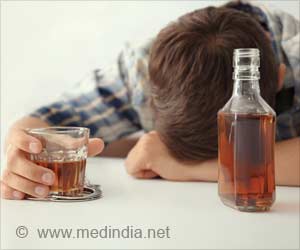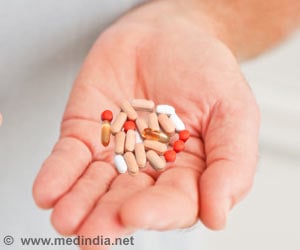Places with a high density of alcohol outlets such as pubs, bars, clubs, and restaurants have higher drink-related hospital admission rates for acute conditions such as drunkenness, vomiting and chronic conditions such as liver disease.

TOP INSIGHT
Alcohol-related hospital admission rates are significantly higher in areas with more alcohol outlets such as pubs, bars, and clubs.
The study, conducted by researchers from the University's School of Health and Related Research (ScHARR), revealed that the places in England with the most pubs, bars, and nightclubs had a 13 per cent higher admission rate for acute conditions caused by alcohol such as drunkenness and vomiting.
These areas also had a 22 percent higher hospital admission rate for chronic conditions caused by alcohol - such as liver disease, compared with places with the lowest density of alcohol vendors.
The research, funded by Alcohol Research UK, analyzed both on-trade outlets - where alcohol can be bought and consumed on the premises such as pubs, clubs, and restaurants - as well as off-trade outlets - where alcohol is purchased to drink elsewhere, like supermarkets and convenience stores.
The study, which is the largest of its kind worldwide, examined data on more than one million admissions wholly attributable to alcohol over 12 years. It included all 32,482 census areas in England.
- Places with the highest density of restaurants licensed to sell alcohol had nine percent higher admission rates for acute conditions and nine percent higher admission rates for chronic conditions caused by alcohol.
- Areas with the highest density of other on-trade outlets (such as hotels, casinos and sports clubs) had 12 per cent higher admission rates for acute conditions and 19 per cent higher admission rates for chronic conditions caused by alcohol, compared with areas with the lowest density of other on-trade outlets.
- Places with the highest density of convenience stores had 10 percent higher admission rates for acute conditions and seven percent higher admission rates for chronic conditions compared with areas with the lowest density of convenience stores.
Ravi Maheswaran, Professor of Epidemiology and Public Health at the University of Sheffield, said: "The strongest link was between pubs, bars and nightclubs and admissions for alcoholic liver disease.
"While convenience stores were clearly associated with hospital admissions, the association for supermarkets was modest, as we had expected. Supermarkets account for a significant proportion of alcohol sales, however, they tend to serve large catchment areas whilst our study was set up to examine the effects of outlet density in small local areas."
Outlet density was measured as the number of alcohol retail outlets within a 1km radius of the center of every residential postcode in England. This was classified into four categories, ranging from lowest to highest and the analysis adjusted for other factors which could have influenced associations, including differences in age, socio-economic deprivation, and hospital admission policies in different areas.
Professor Maheswaran added: "Although we have observed clear associations between alcohol outlet densities and hospital admissions, our study cannot confirm if these associations are causally linked.
"However, there is emerging evidence from other studies suggesting that local licensing enforcement could reduce alcohol-related harms."
The research was funded by Alcohol Research UK, an independent charity working to reduce alcohol-related harm through ensuring policy and practice can be developed on the basis of reliable, research-based evidence.
Dr. James Nicholls, Director of Research and Policy Development at Alcohol Research UK, said: "Understanding the relationship between outlet density and alcohol hospital admissions is essential to reducing harm. Local licensing authorities, in particular, need to factor this information into their decisions.
"We often hear that no individual outlet can be held responsible for increased hospital admissions, and because of this licensing teams can't plan on that basis. However, this study adds weight to the argument that licensing needs to also think about the overall level of availability in a given area.
"As the evidence on the relationship between availability and harm becomes stronger, those tasked with regulating the market need to respond."
Previous work by the University of Sheffield researchers showed a vast increase in the number of off-trade outlets, such as convenience stores and supermarkets that sell alcohol. The amount of convenience stores selling alcohol more than doubled from 2003 to 2013, with an increase of 104 percent. The number of supermarkets selling alcohol also increased by 33 percent.
Source-Eurekalert
 MEDINDIA
MEDINDIA




 Email
Email










